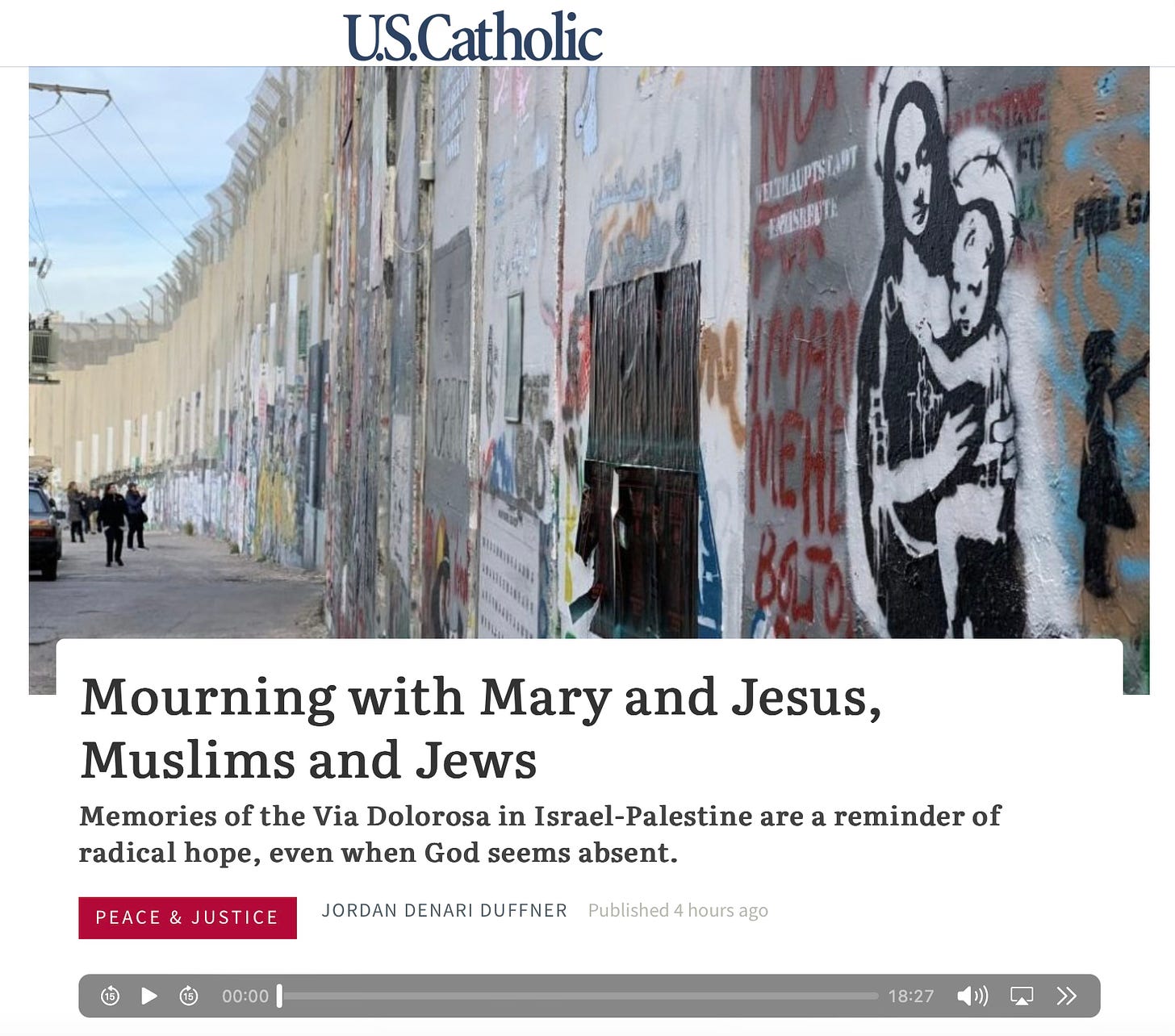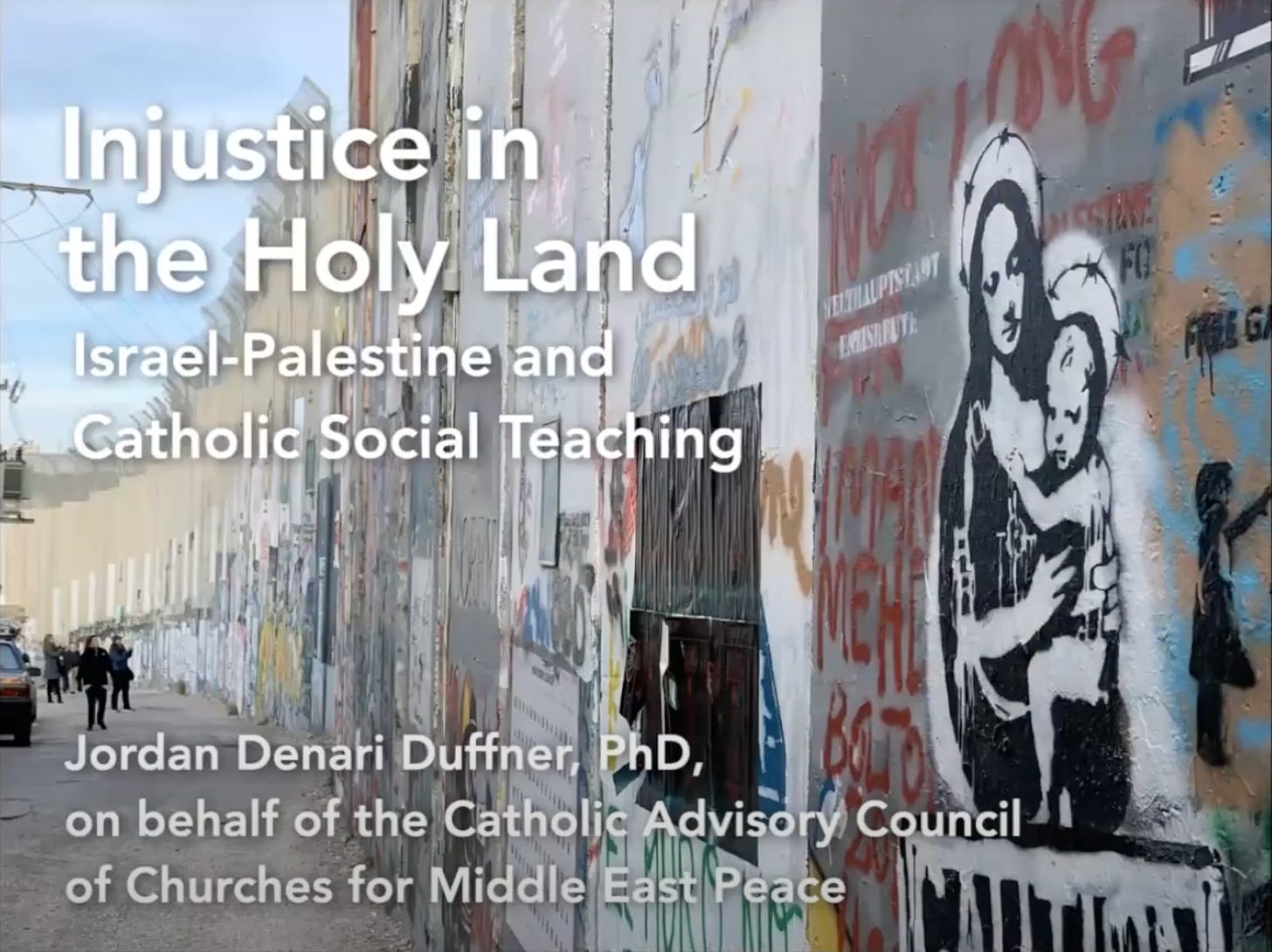Walking the 'Way of Sorrows' with Jews and Muslims
Memories and lessons from an interfaith pilgrimage in Israel-Palestine
With the horrific news from Israel-Palestine in recent weeks, my mind keeps going back to an interfaith pilgrimage I took there with Jews, Muslims, Protestants, and fellow Catholics in early 2020. I wrote about the experience—what I saw and learned—in an essay published in U.S. Catholic magazine:
You can read the full piece (or listen to it as an audio recording) here. Below, I’ve shared some excerpts from the essay, including stories from a rabbi and imam that give me hope in these dark days. I’ve also shared photos that illustrate some of what we witnessed.
If you’re not yet a subscriber to my Substack publication, Digging Our Well, you can sign up to receive occasional essays and analysis like this one, straight to your inbox.
Journeying in Jerusalem
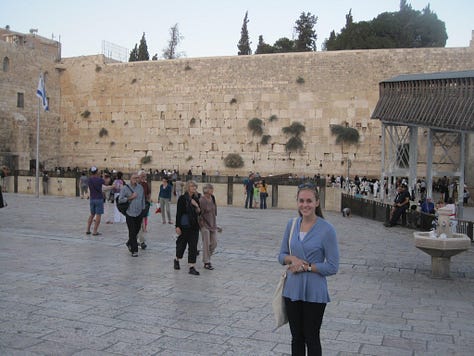
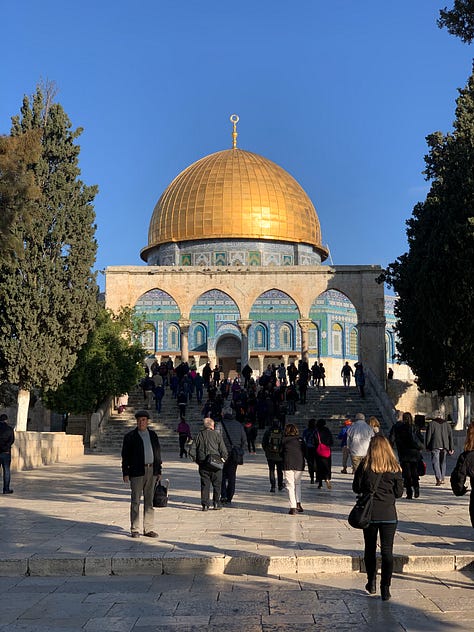



In Jerusalem, we walked along the narrow Via Dolorosa, the Way of Sorrows, praying the stations of the cross and remembering the final, tormented moments of Jesus’s life. As we approached the fourth station, we stepped through a stone archway and into a dimly lit room where we found a simple statue of Jesus carrying his cross and looking into the eyes of his mother, Mary. The two Jesuits with us recited the prayers aloud and asked us to contemplate Mary’s grief over the suffering of her son. In the dark and quiet, many of us—Jewish and Muslim, Catholic and Protestant—started to weep. Some of us had heard this story countless times before; for others, it was their first time. Yet, as our sniffles and cries echoed in the room, we forged a deep bond. Together, we were mourning not only this mother and son of two millennia ago, but all the suffering parents and children of today, in the Holy Land and beyond.
Tears in Hebron
In Hebron, our first stop was to the tomb of Abraham and his family members. …The building, dating from the time of King Herod, is a large, ancient stone complex, full of rooms decorated in calligraphy, colorful carpets, and intricate latticework. As I turned the corner to the place where Abraham is buried, I found my eyes welling up. Sitting there as Jewish pilgrims recited prayers in Hebrew, I was overcome by the feeling that we—Abraham’s descendants: Christian, Jewish, and Muslim—have let him down by allowing ourselves to be torn apart.
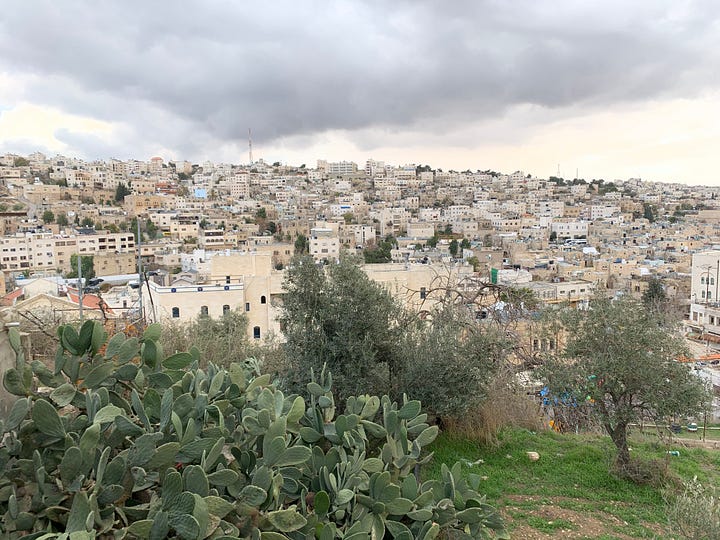
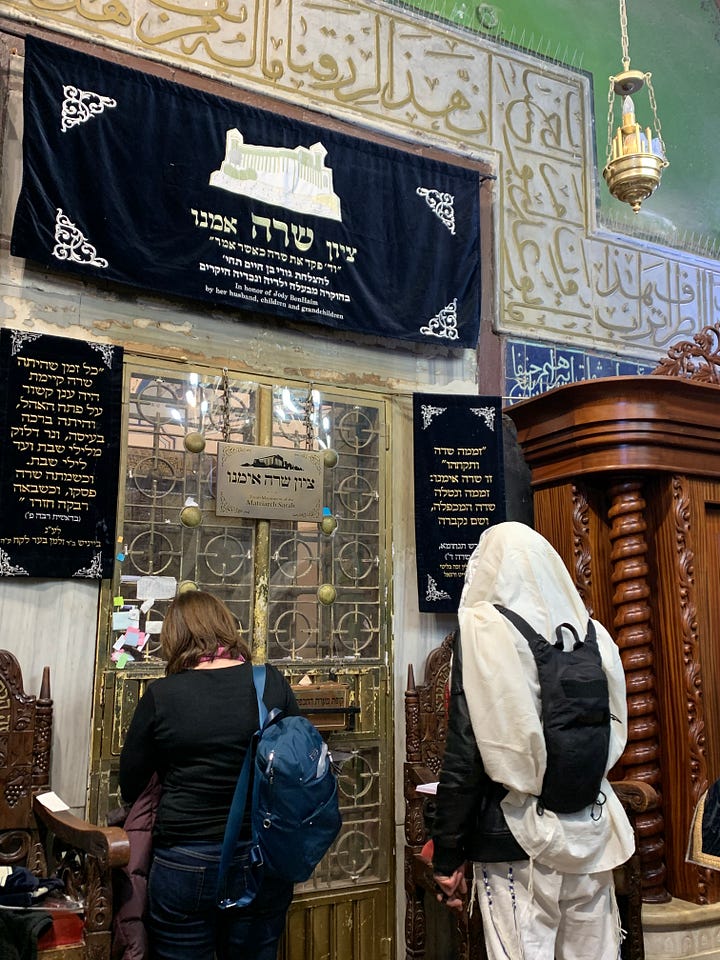
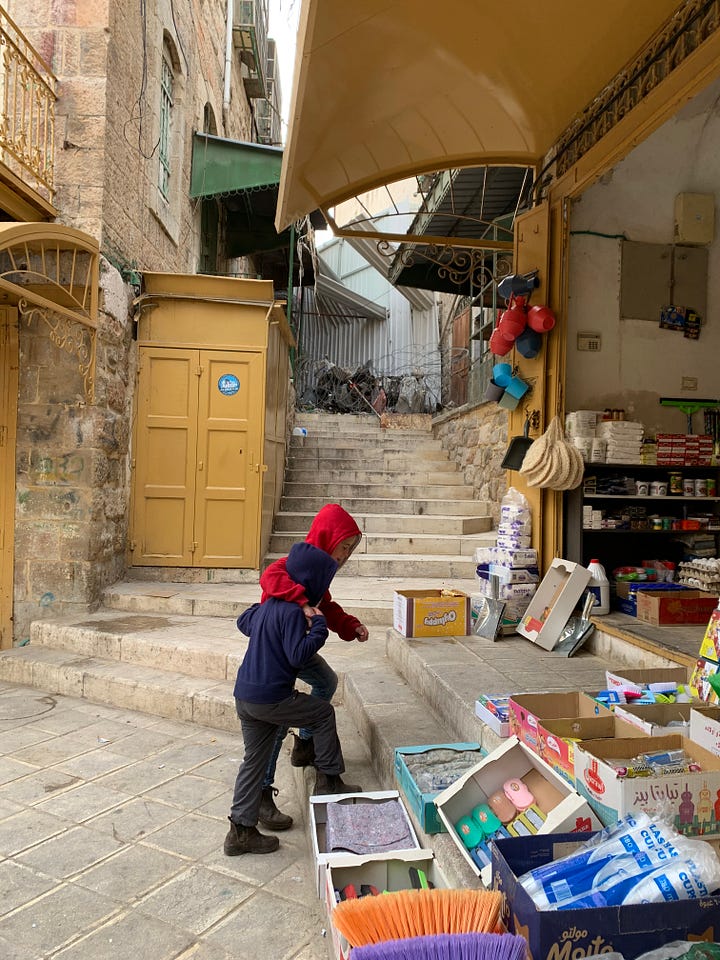
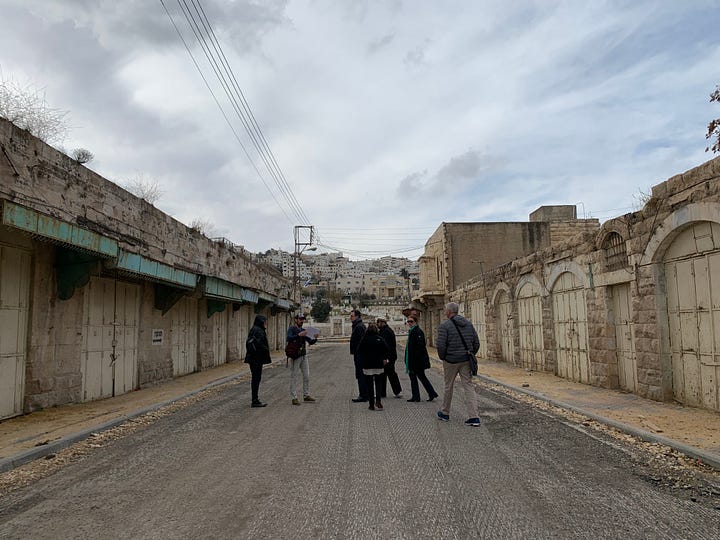
Teargassed in Bethlehem
In 2014, I explored protest art in the city with my parents and now-husband, guided by a local cab driver, Muhammad. Gradually, we began to notice a prickling sensation around our nostrils and eyes. “Come back to the car,” Muhammad said with urgency, “Yullah!” We quickly learned that, a few streets over, Israeli forces had begun firing tear gas to disperse demonstrators. They were protesting the recent murder of a Palestinian man by Israeli soldiers at the border with Jordan. We shuddered when we realized that just a day before, we had passed through that same border crossing.
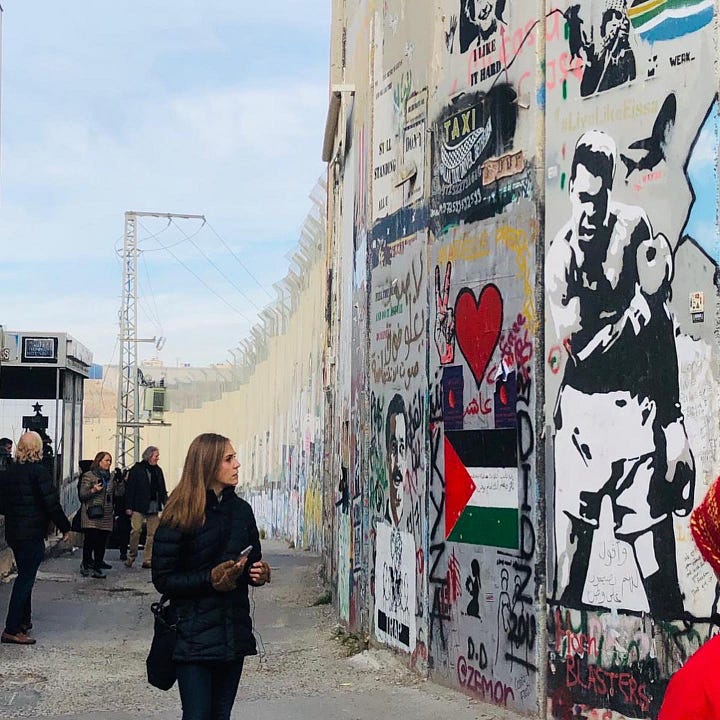
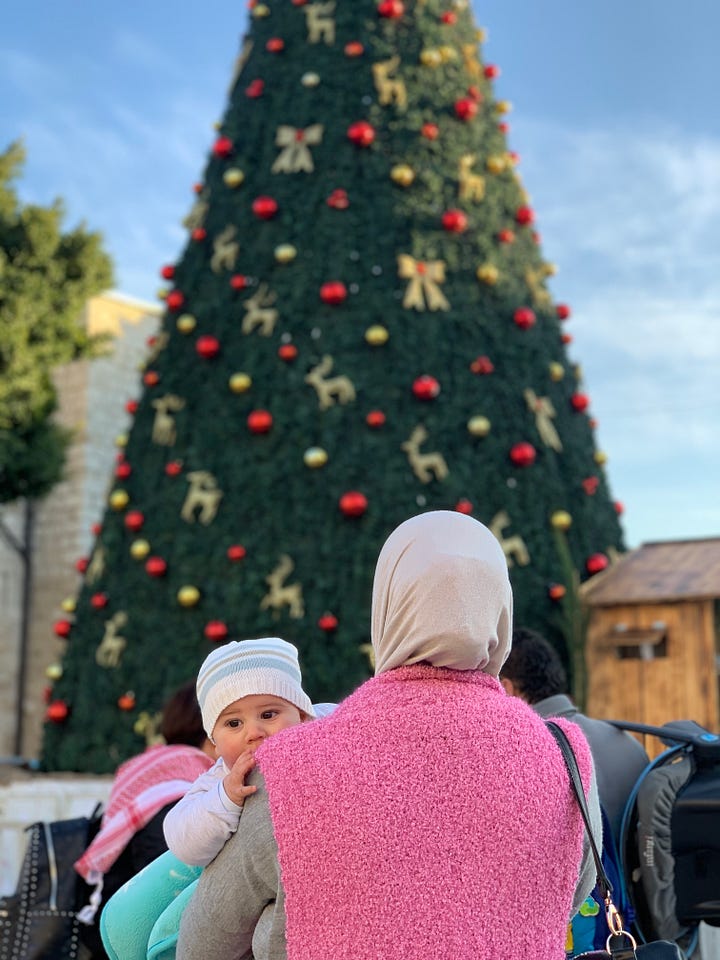
Lessons from a rabbi and imam
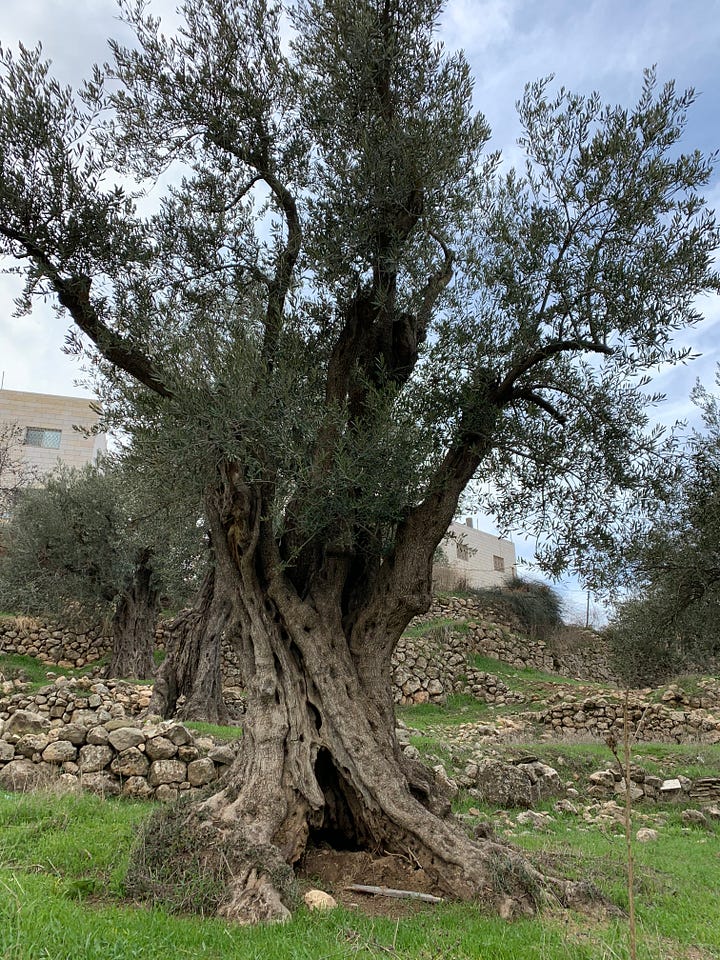
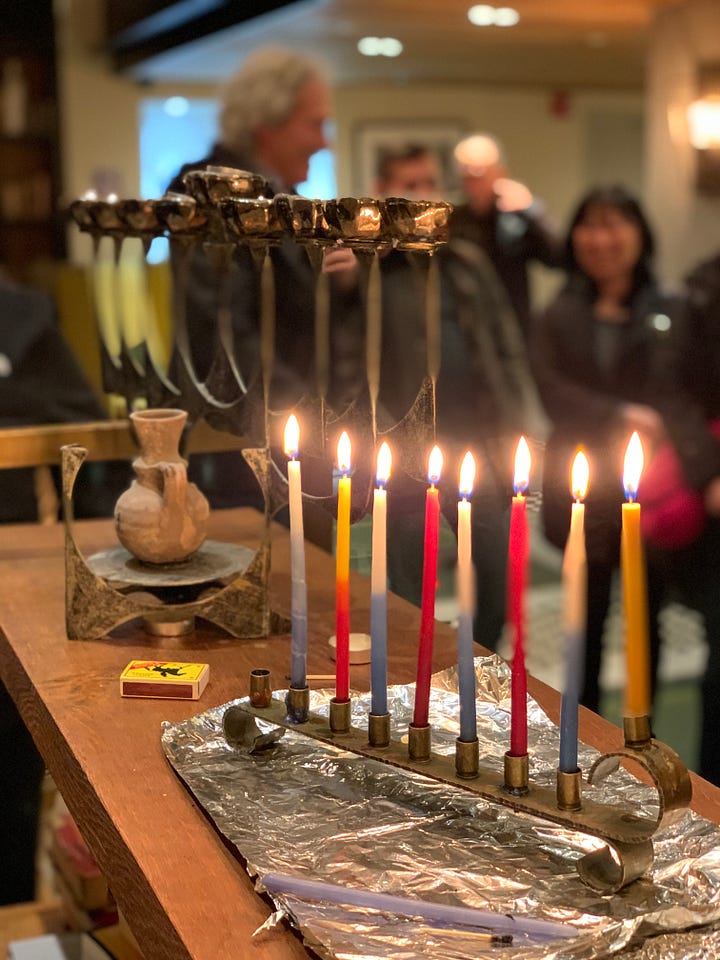
On our first night in the Holy Land, the rabbi led us in a ritual lighting of the candles for Hanukkah. … She explained to us the story that inspires the ritual—how the ancient rabbis needed enough oil to light the temple for eight nights, but only had enough for one. Fully aware of their deficit, they lit the single candle anyway. Then, by some miracle, that one-day supply lasted all eight nights.
Toward the end of our trip, the imam recounted the Quran’s story of Jesus’ birth. In it, Mary is not laboring in a Bethlehem stable with Joseph, but out in the wilderness alone. Under a date palm tree, she cries out in pain, wishing she had never been born. Then a voice tells her to shake the trunk of the tree to bring down its fruits and to drink from a spring that has just appeared beneath her. God provides for her and comforts her. And the virgin delivers her son, a miracle.
These stories, from my Jewish and Muslim teachers, are ones for the contemporary moment. They do not encourage a naïve optimism, nor do they allow us to give up. Instead, they compel us to choose radical hope; they dare us to ask God to help us through that which seems impossible. They urge us on: Even in the unending darkness, light the candle. Even if God seems absent, shake the tree. There may be miracles yet to come.
Earlier this month, I gave a webinar on the situation in the Holy Land for the Ignatian Solidarity Network. I talked about the present crisis, the history and situation beyond the headlines, and how Catholic social teaching can inspire our individual and collective efforts for change. You can watch it here.




